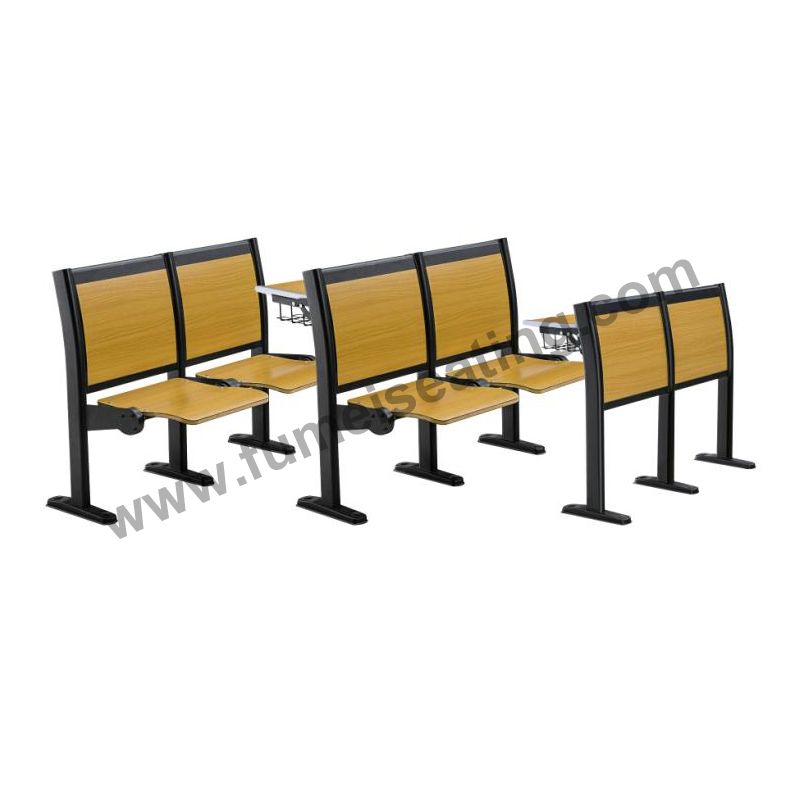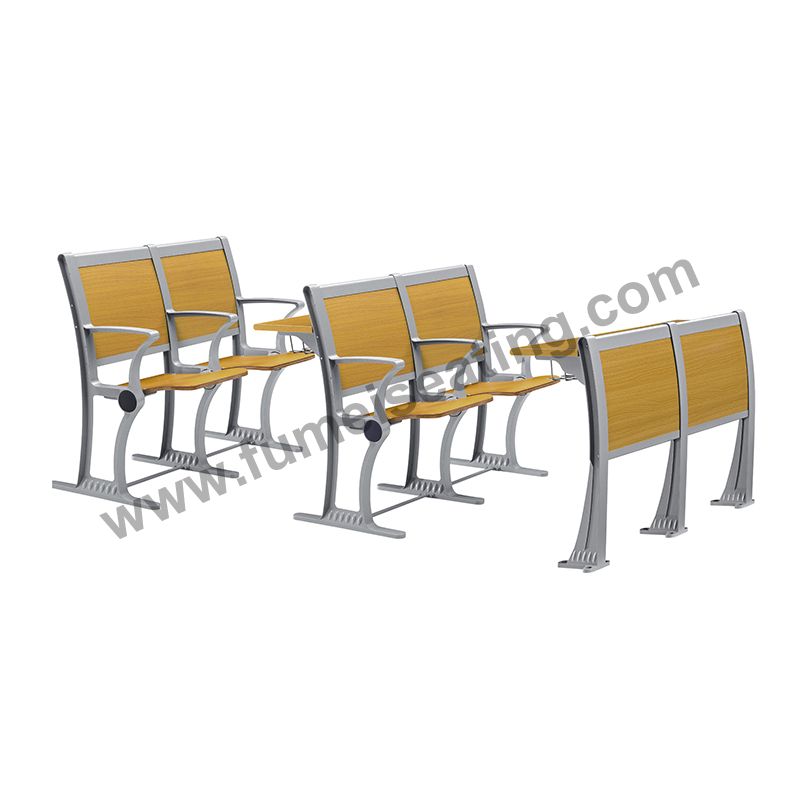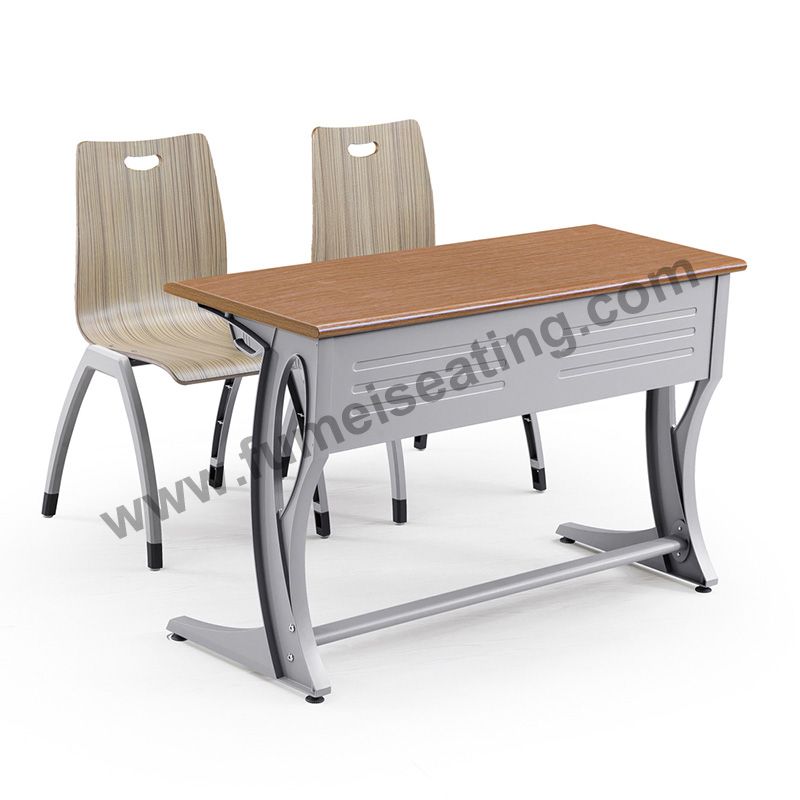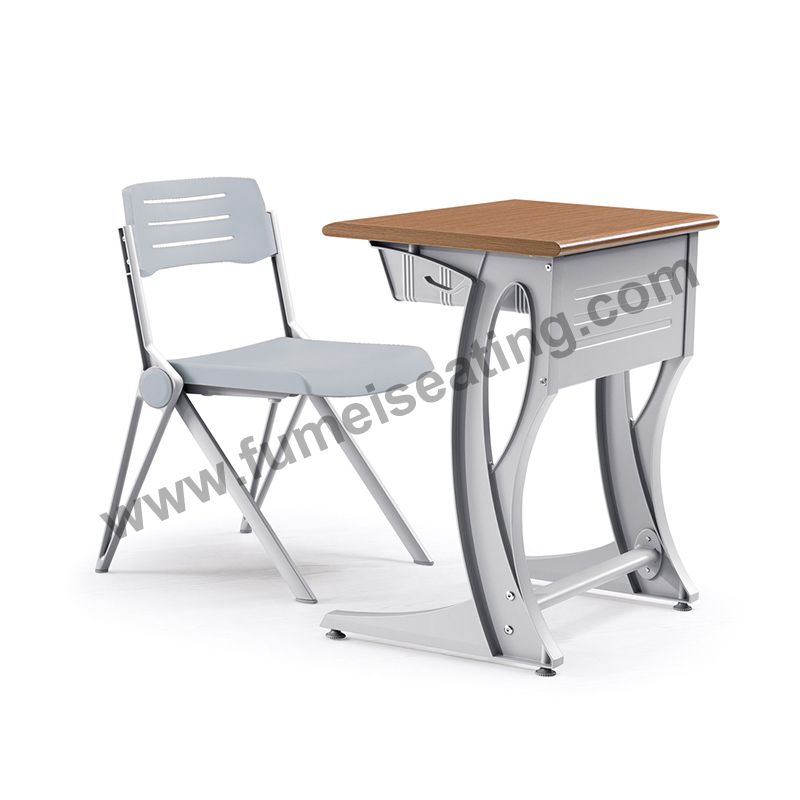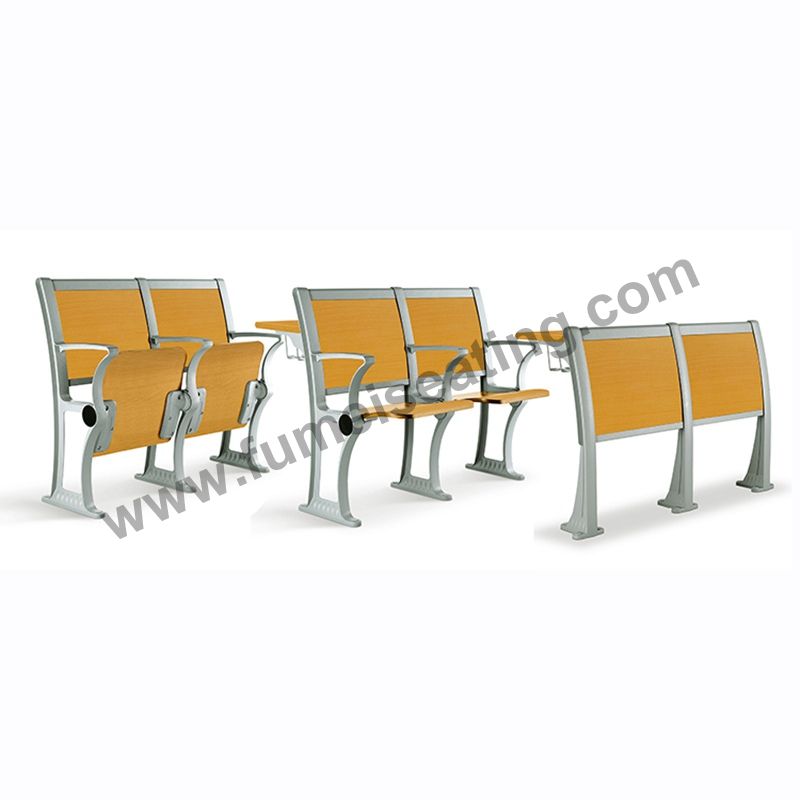- +86 757 2363 2953
- info@fumeiseating.com
We consistently carry out our spirit of ''Innovation bringing development, Highly-quality ensuring subsistence, Management promoting benefit, Credit attracting customers for Desk And Chair For Classroom,Table And Chair For Classroom,Desk For School,Chair For School,Table For School.Our final goal is "To try the best, To be the Best". Please feel free to contact with us if you have any requirements. The product will supply to all over the world, such asmoldova ,Brazil ,Chicago ,Manchester ,Houston ,Being the top solutions of our factory, our solutions series have been tested and won us experienced authority certifications. For additional parameters and item list details, please click the button to acquire additional nformation.
Wirecutter is supported by readers. When you make a purchase through a link on our website, we may receive a membership commission.
We have eliminated the LapGear eDesk for commuters because it has been discontinued. We have also added some supplementary test instructions for the following products:
with
section.
Your
guide
Share this comment
The lap desk is like a work space: not the most elegant choice, but generally comfortable and practical. After 10 hours of research and 25 hours of laptop testing, we are confident
It is the best for most people. It reigns supreme in terms of comfort and manufacturing quality, is one of the widest and strongest surfaces of any laptop we have tested, and provides additional storage options for phones and other supplies.
LapGear Designer is the overall package in terms of style, comfort, stability and manufacturing quality, which includes some additional storage options.
of
It has a clean, simple design, and has a variety of colors and patterns. It is strong, well made, and feels comfortable and cool on your legs. It has a span of 17¾ inches (enough to hold a 13-inch laptop and mouse, or a 17-inch larger laptop alone) and weighs about 2 pounds. It has a slot to support your phone, a handle to carry or hang it, and an elastic strap to store index cards or pens. In addition, it has a short and sturdy plastic laptop stand on the front edge to prevent your things from slipping to the top, and it is equally effective for left- and right-handed people.
advertising
The Avantree multifunctional chair has adjustable legs, which can keep your knees in the coolest state of any lap desk we have tried, and you can adjust the height and angle of the desk to various positions.
*At the time of publication, the price was
$50
.
If you want a lap desk with built-in legs, it is the best choice. Since it is basically a mini table, you can lift your laptop and other consumables from your lap, making it a better choice in terms of heat management and ergonomics. Its structure is as good as LapGear Designer and has many of the same features-laptop stand, left and right hand accessibility, larger work surface-and many more other features. Its feet extend to nearly 13 inches. You can also adjust the angle of the table to make it more customizable to achieve the desired posture-just make sure you have a flat surface underneath, so that you don’t tilt the feet . In addition, if you set up the Avantree multifunction machine on the desk or table, you can also use it as a DIY
Either
As the author of this guide, I spent 10 hours researching and testing laptops for 25 hours. I also wrote articles about mousetraps, USB-C cables and adapters, portable solar chargers, etc. for Wirecutter. Before that, I worked as a science writer for more than four years.
In addition to using the past four years of working experience in homes and flexible seating offices, I also consulted with a dozen other Wirecutter employees of different heights and sizes to better understand the wide range of needs of people using lap desks .
For the previous version of this guide, we spent an additional 12 hours to test the laptop desk and interviewed ergonomics experts
, Professor of Cornell University.
Lap desks are not for everyone. Generally speaking, their ergonomic performance is not as good as an ordinary desk. According to Alan Hedge, an ergonomics expert at Cornell University, they can only be used for up to one hour a day.
. In other words, the life span is short, and sometimes you need to start working from the strictly recommended sitting position. Input: laptop desk.
The lap desk already exists
.
Even use my own laptop
It is made of sturdy mahogany, weighs 5 pounds, and has a built-in drawer for quilts and ink for drafting the Declaration of Independence. (If you don’t like our choice and think it’s expensive, you can buy
The founding father’s lap desk or just
[PDF].
Most modern lap desks have padding, ventilation, and can prevent mobile phones, tablets or laptops from slipping off, but the basic functions are roughly the same. If you want to work on a laptop or tablet computer—or crossword puzzles, writing thank-you notes, coloring, and looking up tarot cards, whether on the sofa or bed, a lap desk can help. They provide a work surface that is flatter and more stable than bare hands, and can effectively protect your skin
(For details, see
section). They let you pick up the workstation and take it with you. People with many needs use them: remote workers, retirees, commuters, college students, people with disabilities or disabilities who cannot use them to work at their desks, etc.
We choose not to test gaming laptop tables or
For this guide, we do not recommend them.
Excessive temperatures can affect the performance of the computer, which is why there are so many products designed to keep it cool. However, we talked to people who regularly play video games-Wirecutter's editor-in-chief Kimber Streams and staff writer Thorin Klosowski-they said that they prefer to play games on the table or table because it is more comfortable, improves posture and works for them Provide more use space for a mouse.
We did not test
,
, Or
, Make sure they are not within the current scope of this guide. However, we plan to keep them in mind in future tests.
First, we scanned Amazon and other retailers to find the most popular and widely used options. We also consulted external editorial sources, such as
with
See what their favorite laptop is. On this basis, we have considered the following factors and developed a rough list.
After narrowing down the list based on these conditions, we finally got 7 models. We chose LapGear XL Executive (discontinued) and the and the previous two models.
:
We asked three or more Wirecutter employees to test each laptop, let them work on each laptop for at least 30 minutes, and then fill out a questionnaire on each laptop. In addition, as the author of this guide, I personally tested each laptop for an hour or more and paid attention to the following factors (listed in order of importance).
Of all the laptops we considered, we would get
. It feels comfortable and strong on your legs. With a width of 17¾ inches, it is comfortable enough to fit a 13-inch laptop and mouse, or only a 15-inch or 17-inch laptop, and it is equally effective for left-handed and right-handed people. It can make your work surface more than 3 inches higher than your bare knees and weigh more than 2 pounds. A few small places are very eye-catching, such as plastic laptop holders that keep your belongings in place, phone slots, handles, elastic straps for storing index cards or pens-overall, it’s cute and neat Appearance. We tested before and liked
If you want some extra surface space, its size is about 18½ inches.
Several LapGear lap desks
And finally entered our test list. This company (under the protection of Creative Manufacturing) is one of the few companies we have found. The company specializes in laptops. Laptops have a variety of options and styles, have a strong network influence, and are generally The praise. All LapGear models have one
, When we called the customer service department anonymously, they immediately picked up the machine and asked to ship the replacement product without any problems-except for more detailed information on how the company can improve the product. In all the LapGear models we tested and competitors' models, the designer shined with the brightest light and performed well in almost all aspects we tested.
The filler on the bottom side of Designer is filled with microbeads (a small amount of foam particles) and wrapped in a soft and comfortable canvas-like polyester material. It feels soft but stable because the particles inside adapt to the shape of the knee better than solid foam pads. You can even adjust the angle (roughly) to suit your position. The upper surface of the laptop desk (made of warm-colored artificial wood laminate) is equally comfortable to use. When typing, practicing calligraphy, and coloring, the smooth and frosted effect will not hurt your wrists
, Or the first draft of a handwritten novel. We like this texture rather than dented plastic, for example
Or smooth surface
We are deeply impressed by the manufacturing quality of LapGear Designer, and we hope this table can withstand years of use. Even if the top hat is not made of solid wood (it may look and feel more luxurious but also heavier), the designer will still feel strong and well-structured. These materials look very durable-and because they are petroleum-based, they are easy to wipe and clean locally. In contrast, we have eliminated many models from the test list-see
-Due to the existence of an owner review model, poor quality workmanship and cheap materials are reported.
The designer raised the laptop about 3 inches from the knee surface, which is about 1 inch higher than most other models we tested. Compared with the bare knee, it has both thermal management and ergonomics help. It weighs about 2 pounds and feels about the same as a thick woolen blanket on the knees. It is large enough to hold a 13-inch laptop and a wireless mouse, or a larger, 17-inch wide laptop without a mouse.
The small lip (a 6-inch white plastic strip with a height of only half an inch) on the near edge of the designer is wide enough to ensure that your laptop does not slip onto your abdomen while typing. But this does not prevent left-handed or right-handed people from comfortably using the wireless mouse or writing on the knee. In contrast, we tested some other models, such as
, Having the laptop clasp or other additional functions that the tester thinks is very annoying, thus hindering the basic functions of the laptop.
In addition, the designer has a small slot that can hold your phone or store pens and pencils while you work. The elastic bands at the corners (a feature not found on any other models) provide extra storage space for index cards or other small items you don’t want to slip off.
In terms of appearance, Designer is one of the most attractive models we have tested. It has a simple and stylish appearance, with a streamlined shape, and is easy to hide under the sofa or beside the bedside table. Its artificial wood top is a warm honey color that complements the white details. The handle and bottom cushion are made of vibrant fabric with a variety of colors and patterns, which can provide you with a variety of options to match your personal style.
Although price is the least of our consideration, Designer happens to be one of the cheapest models we have tested.
Although we generally like the look of LapGear Designer, we hope it provides at least a neutral, solid color. Paisley and Argyle are not suitable for everyone, and it would be shameful if your lap desk collided with the decor of your house, office or dormitory. However, since the designer has multiple styles and colors (eight at the time of writing), we think most people can find a style they like, even if it is not their first choice.
Even though a lap desk can slightly improve ergonomics and keep a bare laptop away from your bare feet, a cushioned option like Designer can only play a big role. If you are most concerned about ergonomics and ventilation, you should get our
If you want to use a lap desk that raises the work surface above your knees to increase airflow and improve posture, you should
. It is not as stable, comfortable or attractive as LapGear Designer, but it can keep the knees cool, and its adjustable height and angle make it more suitable for various sitting positions. As an added bonus, you can set it on the table as a temporary menu
Like LapGear Designer, Avantree has a laptop stand on the bottom of the desktop, and there is enough space on both sides of the 13-inch or 15-inch laptop for you to write or slide the mouse. In addition, if you don't want to put the laptop stand on the laptop stand, you can easily remove it (the box contains two rubber parts to plug the hole at the back). The other models we tested did not choose the option to close the laptop stand like this.
Avantree seems to be made of high-quality, durable materials (metal and thick plastic), and has a strong structure. Because it does not have to be in direct contact with your knees, the legs will not be hot or restless. There is a bit of lips on the edge of the table that we cannot avoid because it will rub your wrist and scratch your skin. The legs also wobble a bit-you need to place them on a level surface to create a solid foundation-but compared to the laptop computers with legs we tested, they cause us the least trouble. And we like that they are made of brushed metal, so they don't look super shiny and can slide into place cleanly when you adjust the height.
Avantree weighs 3½ pounds, which is heavier, but still very compact and portable. It is 2 inches wider than the designer, and a few inches wider than the designer, and its legs extend to about 13 inches high (when the legs collapse, its height is less than 2 inches). It takes some practice to unfold and stretch the feet and adjust the angle of the table. However, when the leg is fixed in place, it makes a satisfying hissing and clicking sound, which is intuitive to use as a whole. For example, the 8-year-old daughter of senior staff writer Doug Mahoney ordered his Avantree to set up a "coffee shop" in their living room, and it didn't have any trouble to use it.
Compared with LapGear Designer, Avantree is simply a barebones system. It does not provide any storage options for pens, phones or other consumables. And it is by no means beautiful. One of our testers compared it with hospital equipment. But we believe that this is a trade-off between better ventilation and the ability to precisely adjust height and angle.
It was originally the only lap desk with legs we requested for testing, but it was so bad that we had to give another one (Avantree). AboveTek’s legs are difficult to adjust, and the laptop buttons (used to hold the laptop in place) and rubber bands (used to hold the mouse or phone) are bulky, uncomfortable and almost unusable.
(Our previous budget choice) was cancelled in our latest round of testing because it does not have a built-in laptop stand that prevents your things from slipping.
Some followers developed among our testers. Its appearance is cool and fashionable, full of masculinity, but not too masculine. It feels strong and stable on your knees, and its faux leather laptop stand (which doubles as your hand pad) is both firm and comfortable. But even if some people like Bamboard, some people hate it. It is much heavier than anything else we have tested (nearly 5 pounds compared to the designer only 2 pounds), and there is no padding on the bottom. Except for the honeycomb cutout in the middle, the mouse pads on both sides, the three longer tablet slots, and the padded laptop stand, it is basically a wooden board.
LapGear eDesk used to be our best choice for those who need something more compact to travel or commute, but it has been discontinued. We are looking for other small portable options to replace it.
Almost the same as eDesk, but we found it difficult to write on its dented plastic surface. In addition, the lip around the tablet slot provides an uneven surface for the laptop or notepad.
On paper we like
a lot of. It’s one of the most extensive models we’ve tested. It’s cushioned and ventilated, and features two mouse pads, zippered storage pockets and a spacious laptop stand. But in fact, the laptop stand is made of hard plastic, and the whole thing is difficult to use.
LapGear XL Executive was our first choice, but it has been discontinued. In addition, in the latest round of testing, we believe that the lack of a laptop stand (especially its low traction surface, which makes it easy for the laptop to slip) is a breakthrough.
We also considered several options from other popular manufacturers, including Hive Modern, iSkelter, Kikkerland, Mind Reader, Nnewvante, and Sofia+Sam. However, due to low owner ratings and low Fakespot ratings and/or lack of features, we eventually removed them from the test list.
Sarah Whitman
Sarah Witman (Sarah Witman) has been a contributing writer for Wirecutter since 2017. She has been a science reporter for more than seven years, covering topics ranging from particle physics to satellite remote sensing. Since joining Wirecutter, she has researched, tested and written articles about surge protectors, mobile power supplies, laptop desks, mousetraps, etc.
by
Alex Alpaya
This is our advice to keep warm in a cold office.
Nathan Edwards
With the right equipment, you can do a lot of work on the iPad. These are the best accessories to turn the iPad into a mobile office space.
Nick Gay
If you want to do heavy writing on the iPad, you can use a keyboard case or the like
Typing better, it will protect your tablet.
Kimber Creek
If you need a wireless or Bluetooth keyboard, then
After years of testing (still a battery that is rarely replaced), it is still our choice.
Become friends!
you can
too.
©
2021
Wirecutter, Inc.,
national
Throughout the United States,
The pandemic has rewritten the syllabus for the 2020-2021 school year. Whether in a sheltered, socially distant classroom or actually educating students on a computer screen, teachers are facing huge challenges. This is the experience they had to talk about at the beginning of the school year.
The loud thunder stunned me from sleep. As my heart beats faster, I look back at the time. I can only try to sleep for another hour and a half at 4:30, but I have other plans. When I sat up and looked out the window, I stared at the dark, mysterious sky.
I am exhausted, but I must start a new day because this is the inevitable time. I must report to the factory today.
I started a ceremony, which will soon become my daily routine. I take a hot bath. Brush your teeth. Put on ChapStick. Look for clothes with many pockets. Show makeup on my eyes. The mask will cover the rest of me.
I checked my life-saving bag to make sure I had the necessary items: hand sanitizer, mask, wipes and at least two bottles of water.
When I opened my schoolbag, I thought of last year's schoolbag, and I smiled. Then filled with purple pens, gifts for colleagues and first day awards for students. I have always enjoyed playing games with them on the first day.
But this will not happen this year. In the foreseeable future, teaching will be conducted online.
I reached the thermometer in the pharmacy and took my temperature.
Cannot exceed 100.4. Finally, I completed the health assessment form required by the factory online to "prove" that I was free of illness.
My "Good for the Soul" soundtrack was played on the car radio, but I ignored it. To enter the factory to enjoy the irony of Beyoncé is too much, telling me to "root".
After driving through the rainy street, I arrived and parked in the front parking lot. Before entering the factory, I stopped to see other colleagues.
With his head down, a worker walked slightly as he stepped into the front door. Another colleague was sitting in her car. She closed her eyes and remained motionless. Even if it is only a short moment, meditation must be her peaceful moment. I will not disturb her.
Others hide in the shadows of cars and trucks, sticking out their faces to cover their noses and mouths. The covering also suppresses the lips that usually express a "welcome back" greeting.
When I met my new intern Anna, he was sitting alone in a parking lot full of puddles, and then we were with the others. We trudged inside the factory to start this new work and education.
Nothing is more important than before.
Due to illness, the workers were unable to meet in all. Half of the employees were sent to the cafeteria, and half were sent to the auditorium. We can't even start the school year alone. There is no unity anymore.
Anna and I were sent to the auditorium to receive further instructions. After entering, we will hear the following instructions:
Take five seats separately!
Sit in a row!
Sit forward!
When each worker follows the instructions, there will be a slight squeak. The conversation is limited. There was no happy conversation about children and escape this summer. The disease takes away a lot of things. This also eliminates the noise and excitement that usually occurs when we start another school year.
Just a year ago, teachers of all grades gathered in this space. Laughter, hugs and best wishes, and hope to have another successful school year. But the tone has changed. Most people sit and stare, their eyes full of nervous tension, confusion and anxiety. We will hear sound from the speakers soon. The leader is ready to start.
The leader appeared on the big screen, and as the anxiety gradually penetrated into my soul, I tried to pay attention to my new instructions. The leader’s message was quick and direct, and we were sent to the workspace. The leader’s statement made me uncomfortable, and returning here did not make me feel important.
There are no lights in my hallway. The images of colleagues hovered like phantoms on the abandoned buildings, and each disappeared in the classroom. I panic about the monotonous atmosphere of the work space. It reminded me of everything I didn't have at the beginning of this school year.
No student has no dialogue. Matt. Will you be happy?
Today, only the darkness and I closed the door gently and started a new year of dystopian teaching.
I will teach the children on the factory screen.
I whispered to myself: "Welcome back, teach..."
It was the first day that a student went to school. After eight years of school, you would think that I feel calm and confident about the ninth place. To be honest, managing nerves becomes more and more difficult every year. You want to do the right thing; you want your students to like you and say: "This class is incredible." In the first few days of the past eight years, these moments have been amazing. I will see new faces, bright smiles, stupid characters and nerves suddenly disappear. It feels good.
But the first day of my ninth day? I feel uncomfortable. When I gave a speech on the first day, I was accustomed to hearing and seeing students interacting with each other, but in the Zoom world, all you heard was yourself on multiple tiles on the mute, and that day, most The tile is a blank background for the name. I did not hear laughter. I can't understand body language. What once made me happy in the classroom quickly became emptiness.
That afternoon I found myself seeking guidance from the principal. I felt defeated, but in a unique way, it made me feel more defeated. Last year, I was named DC Teacher of the Year, and this was the first Latino teacher to receive the award. People are reaching out and asking me to share my expertise and opinions in the school district and across the country. I feel that I am at the highest level of my teaching career. Now, after my first "first day" of the distance learning program? I feel like a loser. I don't think I can be the teacher I work hard to become.
I told the principal: "I feel like a first-grade teacher again, just worse." Her response has been haunting me. She said: "It feels worse, because you have accumulated years of effective methods for yourself." "You have background, you have experience. You have expectations. A few years ago on the first day of work, ignorance was to you. Very happy. Now, when the world has undergone such tremendous changes, you are working hard to achieve this expectation."
Will I change my expectations? Will I lower them? In order to adapt to the pandemic, do I need a full inspection? My principal told me to maintain high expectations and low rigidity.
She said: "Create a bigger picture to find ways to strive to achieve the high expectations students should have." "And choose these paths as your teacher's decision as a student at this time."
I listened and after 18 teaching days, I realized that this suggestion has turned me and my students into the best learning promoters. My outstanding co-teacher Danielle Fadare and I helped each other to expand our scope of work to provide meaningful and interesting guidance.
Have we taught students how to read procedures using scientific tools and chemicals this year? no. But we did a demonstration of making peanut butter and jelly sandwiches, and the students learned how to write detailed programs in a group to control every step of my making one.
Do students use compound microscopes to view outdated slides in person? no. But they have learned how to use the virtual platform provided by the local university to study cell structure using a 100x objective lens, which is a magnification that most compound microscopes in K-12 schools do not have.
For the longest time, I regard distance learning as limiting the quality of my teaching. I thought, "Well, I won't be able to do this because it will be different through Google Hangouts or Zoom." Turns out I was right. It will not be the same. But I have a choice. Should I accept these limitations, or should I explore my potential and use my creativity to create promising results? I chose the latter.
Is everything perfect? Absolutely not. there's still a long way to go. There will be many magical moments and victories, but there will also be many failures. However, I will fail to find a different path.
The children are happy to come back. Many of them are already proficient in high technology. They are turning on the camera. They are laughing. One thing I noticed today is that when I fired the kids for the next class, many people wanted to stay and just talk to me. It has no academic significance. . . Just talk about it. It sounds so crazy, I think I can connect with students more than ever in my entire career. I am studying with them. I grew up with them. I hope we can build mutual trust during this time. I hope tomorrow will be better.
"Mr. White! You are in a silent state!" Four virtual family students sang through my iPad.
In response, I used a remote control around my neck to rotate the robot mounted on a tripod next to my desk. My iPad (our portal from school to home) is located on the open top of the robot, and I reach for the microphone button so that the virtual student can hear me.
I told them: "You can start the test."
My face-to-face student (there are 14 students in this class) sat in his seat wobbly, and a child raised his hand and asked, "Well, did you still publish the quiz?"
"Of course, I have posted a quiz." When I opened my MacBook and logged in to the corresponding Google Classroom and scanned the stream, I replied. Then I patted my forehead: "I just didn't put it in the right place!"
When the quiz was reposted, I received an understanding nod from the students-this time it was an accurate digital area setting. When a girl in the front row began to evaluate, she politely reminded me: "Don't forget to attend the meeting."
"Okay," I replied, taking out my phone to log on to the school's website. "Attendance."
Yesterday, when I showed the screen of my laptop through Google Meet and the screen of my laptop through Vivi on campus, I looked up and saw my head captured by two different cameras, on three different screens. Projected twice. If you want to know what to teach during the pandemic, find a dog that will force her to chase her tail and throw it into the mirror. When she is dizzy and unable to stand, please start teaching her new skills.
The ubiquitous hand sanitizer started to make me feel creepy. In the classroom alone, I have a gallon of gasoline. Gallon hand sanitizer should not be used in gallon-gallon jugs for milk and craft beer.
I also have a silo of disinfectant wipes, a pack of alcohol pads, two bottles of disinfectant spray and a random, perfumed antibacterial spray bottle.
Because my school requires masks to be worn inside the building and in the right place; there are no draping beaks, thank you very much-some students started plugging water bottles into mouth covers and drinking through fabrics. So now I see the big eyes of a child wearing a bull wearing a mask, which makes me more scared when someone sneezes.
The children keep sneezing. Recently, I endured three sneezes from a student who asked a question.
"Sir. White? I-um-cho, a,,!
He is a few inches above my shoulder. My instinct is to fall like hell when I exit, roll and run. Instead, I patted Purell's water.
That student was at least masked, and so did I. . . But the unforgettable droplets are like the ghost of a virus hanging in the air for hours. . .
it. Yes. all. I can. do. to. carry on.
Before Kovic (ah, before Kovic!), our teachers were mostly allowed to dip their toes in technical waters-some of us mainly chose to rest by the pool; some of us jumped up. Then a dime dropped: one day during spring break; under the virtual school. In fact, last spring, I photographed the lesson from the blackboard under the children’s playroom in the backyard.
But our turbulent nature requires returning to the building, or at least choosing to return. Parents across the country, with their hair taken from a kindergarten teacher’s class, lit a torch and prepared to rush into the city gate. Therefore, of course we opened them at the same time, including physical and virtual.
Therefore, I now plan six Google classrooms and many Google calendars; I have a Swivl account for managing robots, a virtual logout form, and a sharing link for my back-to-school night video. Negotiations are required for each class. Three to four separate screens, video conference gatherings every morning, seat scans and archive charts for contact tracking, and purchase of HEPA air purifiers (purchased with my own money) to eliminate local troubles.
Speaking of my thoughts: I have the brain of a hummingbird these days. My ability to concentrate has been weakened. At least twice this week, I circled around looking for my mask, and the mask was wrapped in my schnoz and flower gum like a muffin wrapper.
However, being unable to draw my attention to any branch for more than a few taps is not always a bad thing. Sometimes, I forget that my 500-square-foot classroom is filled with possible viral exhalation agents and feel scared. Sometimes, even masked, disinfected and standing behind the boundary line where no children are allowed, I just teach grammar: use a subject and a verb to make a sentence; the teacher and students have to go to the classroom.
In the summer of this school year, I was full of hope. I hope that the school has plans and funds for disinfectants, cleaning fluids, tissues, masks, teacher tests, etc.; I hope that my students and I can stay healthy; I hope that I can still establish personal relationships with students and make learning happen.
I will remember both hands. In the second week, I took my class to the library, and the school district fulfilled its promise to provide every student with a Chromebook. Now, I can choose to let students read from a website or a paper textbook. Call me old-fashioned, but nothing beats the thickness, texture and tangibility of the printed text.
But I am worried that students in consecutive classes will be exposed to the same book. So I went to Amazon and ordered three large boxes of nitrile gloves. I gave each student a pair of small bags with her or his name on them. These small bags are stored in different boxes in the classroom. The students enter the classroom, dry my desk sprayed with liquid detergent, wash my hands with disinfectant, grab the allocated luggage, put on gloves, grab the book on the book, read, and wear gloves on the luggage at the end of the class In the bag, in the box. This is an extremely temporary solution, but it has been warmly welcomed and implemented by the students. Each of them and I do what we need to do-this is the American spirit of doing things.
I will remember the obstacles. Two-thirds of our students choose face-to-face education. It is relatively easy to make some technical adjustments: enjoy a cold breakfast in the classroom, wipe the table before each period, disinfect your hands, and keep a certain distance between the tables. Masks are more difficult-not to wear, but to communicate.
On the first morning of the school wearing gloves and a mask, I helped the students to conduct a security check on backpacks, school bags/purses, and then pass the students through the metal detector. All the students were masked, and I quickly realized the importance of our faces for communication and emotion recognition. If I don't get any response, the cheers from me will produce a reply, the emotional content of which is muffled, remote, and cold. I have the same experience in class. Dialogue involves both hearing and observation, and masks hinder observation. My students and I need to work harder to express expressions through our eyes and voices.
I will remember "Probe". In week 3, I took advantage of the free coronavirus test provided by the state's health and education department. I made an appointment the day before and showed up 10 minutes early. I was the second school employee at the location. The test equipment beat me, but unfortunately, the nurses did not. Teacher after teacher came to the classroom, we wandered in the hallway, chatting awkwardly, trying to maintain social distance.
Thirty minutes after I arrived, two nurses arrived-one female and one male. At the appropriate time, I sat in front of the male nurse, and the male nurse started giving a one-minute speech, and I knew nothing about it-these masks were really painful. The insertion of the probe was uncomfortable, the nurse's count was unnecessarily slowed by five seconds, and the result was slight burning pain and watery eyes. I pulled its tail back to the classroom and beat the first of my 18 students in 30 seconds. I patted my watery eyes with a piece of tissue-after all, one must maintain his image. The result of the second day was: "Not detected."
I will remember Extra. On the third day of school, I learned that my senior scholars can choose to receive virtual education. I tried my best to find a magic bullet, but I believe that the programs and techniques recommended to me in the summer will only allow me to provide a very limited version of my own courses that I have developed over the years. As a result, I found myself trying to build a limited version (currently, for eight students) while doing a face-to-face version. In essence, I feel as if I have to take on the responsibilities of two teachers—me and Extra Mini-Me.
That's it-my first week in school. hand. obstacle. Probe. additional. hope. I thought of the poet Ba Xiu: "Every day is a journey, and the journey itself is home." We can only hope.
tired. This is the best way to describe my feelings in the last four weeks. Exhausted, but also a little excited. This unfortunate situation allowed me to really try something new in a weird way.
When I first started teaching, I taught world history and ancient civilizations to the ninth grade students, and taught the history of the United States and Virginia to the eleventh grade students. Over the years, I have added the history of "Advanced American Courses" to my list of courses. This year, I added the African History and Diaspora courses for the first time. This is a course I have lobbied for for many years.
During the course selection in January last year, I was very happy with the students' interest in this course. But now our school is 100% virtual. This is by no means the worst time for my African history course. When I announced my first year of school, many of my ideas disappeared.
I am planning to go to the National Museum of African American History and Culture for field trips, hoping to become an annual event. I even tried to raise funds for a trip to Africa. Maybe I was too ambitious at the beginning, but this course is very important to me. If I successfully complete this course, other schools may see its advantages and offer them in their schools.
I have experienced similar disappointments in other courses, including History of the Associated Press. In order to adapt to the new virtual environment and keep the children involved, I started a program called Coach Curtis’s American History Roadshow. Since we can't teach in the classroom, I decided to take the virtual classroom to historical sites across the country and have classes there.
In the first week, I went to the Natural Bridge in Virginia. Our first department dealt with the pre-Columbian Native American civilization and its first contact with Europeans. Natural bridges are important attractions for the Indian people of Monaco, so we discussed their role in the history of the indigenous people of Virginia. This week, I went to Salem, Massachusetts. I want to help students understand the appearance of the early Puritan culture and the influence of religious ideals on the social formation and gender roles of society. This is a day out of sync, so participation is voluntary. Imagine that not only my students participated in my class, but other students in my class who did not participate were surprised at me.
One way I try to get them involved is through social media. I will do TikToks for travel, and I will post information about travel on Instagram and Twitter. I have a weekly contest in which I will post a video about the upcoming trip and provide some clues. The first person who correctly guessed where my next destination will be will receive the prize I picked up from the gift shop and ship it to them.
In addition to teaching, I have been teaching football for the past nine years. It is an amazing privilege to see players grow, mature, take risks and learn. Broad Run has always been one of the highest ranked teams in the state. But this year I have not considered how well we can do. I really miss practice. Just practice. It doesn't sound like Allen Iverson, but the simple thing is to be able to practice routinely with our players, deal with them, and build relationships. This is what I miss the most.
I am trying to focus on all these highlights. Because as far as football is concerned, there are not many. Our season has been postponed to February, we have high requirements for the safety of practice, it is difficult to complete anything.
The players are frustrated with all the restrictions. But they have handled it with amazing maturity. They are eager to participate in the local government, participate in school council meetings and even participate in protests. This impressed me the most. They oppose some regulations that restrict their ability to perform this season. Regardless of your opinion on this issue, I am proud that they did not sit in the position they believed in.
Our head coach thought of holding a weekly meeting to check and discuss a book he ordered for everyone, called "Miscellaneous Music". This book by Joshua Medcalf is about the process of falling in love with greatness. This may not be more appropriate when discussing perseverance. At this time, it is easy to give up your dreams and blame the situation.
Without a doubt, this was the most fascinating, challenging, emotional, disappointing and exciting year I have experienced as a teacher and coach. Every week, I feel that my limits are tested. However, in the process, I learned a lot about myself. I hope all of us are teachers and coaches.
It's hard to feel good teaching now. In my Florida area, everything feels wrong: our governor does not seem to support education through budget or speech; we test our children until they cry; education policies are determined by people who don’t understand teaching and learning; Little attention has been paid to the coronavirus crisis at the state level. My area is in a difficult period of transition to a new director.
However, in my school, we work together to make every day safe, healthy, and attractive to our students. We try to support each other. In regions where our leadership has not yet won any trust, this is no easy task. We opened three weeks late because our regional leaders seemed unable to make a decision. It was painful and everyone was exhausted when the school finally started. But at Durant, we were inspired by the principal, who is the most important leader in our daily lives. Not everyone is eager to teach high school students, but I am really happy to be a teacher of students.
Our students can choose between online learning and physical school. I teach in the classroom, but many of my peers teach e-learning at home, and some teach online courses in empty classrooms. Then, these courses are taught in person and online simultaneously, with 50 to 60 students per term. Those who teach at home feel cut off, and in many ways. Teachers who play face-to-face with online students are at a loss. They feel abused because they are abused. There are fragments. This is natural because everyone is struggling, but it does not help morale.
Gone are the days when we had lunch with peers and talked about our days or what a particular child, course or text did. Gone are the days of sharing life with each other. Teaching has always been isolated; we are almost always separated from each other. Our lives are full of children, which is the best part of teaching, but sometimes we need the voice of adults. Very few now. I find that for students who only have Zoom contact with their teachers and peers, this is even more lonely. I know they have good reasons to be at home, but I miss them on campus, as Shakespeare said, let them stir up a group of people.
I have 130 students and what keeps me awake this summer is not knowing if I can protect them. I haven't met them yet, but I know how important they are. I didn't experience fear at Durant Middle School until August 31, the first day of school. Some of my fears are unfounded. We are all adapting to the pain of masking day and night; we are cleaning the desk between each class; we do not share supplies or books. So far, we have only two cases of coronavirus among students, but we have more than 30 students in isolation.
Usually, my students will read "King Lear" and "What They Carry" all summer, but not in this pandemic year. We are still learning how to study literary works, and are preparing to start exploring "Lille" on campus in the first quarantine area.
The most painful thing I find is that I am not ready yet. When I checked the email and read "re: COVID is terrible", it rang. It was only the second week of school, and one of my seniors had already let me know that he must be isolated. I realize that this situation will happen again, and may even happen again, until it starts to become normal. I am tired of the term "new normal".
In my heart, I kept reading the information of that student. He was one of my subjects in the AP literature course. I quickly started my synchronized teaching version because he was in class every day and participated in our discussions. I was lucky to have such a dedicated student, but when I read this information, I didn't think about the curriculum. I am worried, I am sad. I hardly know him, but I hope to treat him better. I hope all of them are better.
My students are right: the coronavirus and its accompanying difficulties are very serious. We were not prepared for this in February, but we have been together since March. The teacher is always a learner, so I want to go to class. When I consider these students I have only known for a month, I feel very hopeful. They are flexible. They disinfect; they wear masks without complaining; they sit six feet for lunch; they seize the opportunity to go to school; they are making plans for the future; they are happy to start their adult life. In short, they are beautiful. I am lucky to know them.
Throughout the summer, the number of coronavirus cases in our county surged, but our school board approved face-to-face guidance. With the efforts of the state and county governments, after we switched to the online distance learning model, we still let teachers teach in empty classrooms instead of teaching at home like spring.
This means that only during the heat wave and fire season in California, taxes need to be spent to power and cool teachers’ classrooms. This will force teachers to abandon home offices that are usually equipped with more reliable Internet and computers, directly affecting our ability to provide services to students. Most teachers moved to the mountain in the spring, but now they are trusted and treated, just like a few are not so dedicated.
When I was a toddler and my sister was a baby, my father died of a completely incurable disease because he didn't speak. Here, my son is a toddler, and a daughter is a baby who is about to return to work, and was told by the family doctor that my spleen was raging in 2010 when the fatal pandemic in my county was raging. The resection has irreversibly damaged my immunity.
Although our largest neighborhood has allowed teachers to follow the teacher’s guidance and work statewide until the students return, I am still anxious to ask for a doctor’s note and still defend myself, as if my doctor should not be trusted. I will suddenly grow spleen. Moreover, before granting immunity, caring and diligent administrators like me were unfairly discussed this medical condition with their teachers. The teachers and principals involved are more willing to use the taxpayer-sponsored time to serve students and families in need instead of strenuously.
An efficient teacher is no stranger to choice and imposing struggles. The best teacher you have ever met may choose to struggle outside the contract, such as making unforgettable lessons in textbooks, organizing eye-opening field trips, spending your own money or spending some time in contact. We choose to struggle is our professional pleasure.
The forced struggle (known as "BS" among educators) consists of compulsive activities with little educational value, and continues to prevent countless promising teachers from becoming like you remember and inspiring you That one, the one who changed your life, even saved your life. For decades, the forced struggle has exacerbated our widespread teacher shortage.
Since my 11-year teaching career includes four countries, different levels, multiple languages and rich technology, I have come to a point where I never thought of fighting to determine my livelihood. Then in 2020 I was instructed to take a beer.
I am still deeply grateful for being able to teach at home in the end, because it is undoubtedly good for my family’s health and students and technology. I hope that my colleagues will be granted the same choice, not only because of its potential increase in effectiveness, but also to gain a sense of security, because we know that we are trusted and supported by people who rule us from a distance.
Educational technology training for teachers is the focus of my master's research, and demand has soared recently. Many teachers have paid more than they did in the spring. Now they have to start again with unreasonable new guidelines and unfamiliar students, with little preparation time. I know I will spend more time with teachers and students, but I welcome to serve in this capacity. Although this struggle of choice consumed my life in the spring, it directly benefited many teachers and even more students indirectly.
Our students also work hard. I know that since the last day we were together on March 13, some people have begun to fall into an unhealthy lifestyle, which ranges from losing sports to no longer walking to and from campus every day. The measures taken have flattened our curve, but it is not free, and the bills have begun to appear.
A month later, I assigned a simple writing prompt: "The best and worst parts of distance learning." Students may be upset when the school starts. Many families are making it work, but many are unable to work, and these responses help illustrate students’ struggles. Although some older students enjoy pre-adult education, the overall mood is mostly negative, usually because of Internet access, family environment, screen-induced headaches, and decline in mental, emotional, and physical health.
Public educators will be the first to list the problems that plague our school system: rooted in years of neglect and misleading struggles. We overcome this problem by choosing to fight for our students and each other. Although we understand the reasons, our abilities are greatly limited during the pandemic.
Will we return to the classroom to solve these growing problems and endanger public health? Do we eliminate the virus by keeping our distance, stressing mental health, and widening the education gap? As many people have started, do we take care of both-and how can we effectively avoid potential disasters on both sides? To what extent will these decisions be chosen or imposed? When the dilemma exceeds the solution, the struggle takes root.
The teacher stabilized the boat. When this episode finally falls into memory, our students will not think about algebra courses, art projects, new applications or malfunctioning equipment, but will think about a core truth that unites educators around the world:
"They had good reasons to resign, but they never did."
How about a class?
I started on August 20th as a second-year student in a long-term alternative course, and I am actually looking forward to it, probably because I don’t know anything about the future. As an eight-year full-time teacher as of 2018, I am eager for professional challenges. What I didn't foresee was that many of these challenges were beyond my control.
I quickly realized that during the pandemic, most teachers are full of anxiety and working overtime is not "teaching." Any good teacher can learn and teach through any medium; this is all other things.
The fact is that in many areas of California, even if the technical infrastructure of most schools cannot support the live broadcast of every teacher at the same time, teachers must work in the classroom. At home, their Internet and computers are usually more reliable, so many teachers will be able to better meet the needs of students. On the second day, I did not go online nine times. My partner teacher (this is a job) started 14 times the next day. In that week, the Internet also crashed.
My biggest fear in the first few weeks of school was not being able to meet the needs of students. The board members’ plan for our region does not seem to be suitable for all of our families. I work in an area in a rural community with many low-income families, and high-speed internet is either too expensive or not suitable for their family at all. Due to Internet failure, students will attend our meeting time throughout the day. For some families, this year is particularly difficult, because we have continuously cut out power due to the danger of fire.
Grading is also very challenging, because many wrong lessons are not the students' fault. Students who missed homework usually find it difficult to find their information, they struggle with inadequate Internet services, and they have to deal with the noise and disturbances around them. We expect these second-year students to be prepared and ready to learn in an environment that is not conducive to learning. Distance learning provides a bright spot for how we as a society ignore education for a long time.
In order to solve all these problems, my principal has been conducting home visits. She also sent emails to her parents to let them know that she can come to their home and teach them the techniques they must use. She visits her home several times a week. The connection between school and family has never been more important.
We have begun to bring small groups of students back to campus. These students do not have sufficient Internet access or people with disabilities who need additional support, and distance learning is usually not possible. They come once a week, separated by a distance in the cafeteria. Facts have proved that this day is helpful to these students because they have received adult support and can use a better Internet. There are also some applications in the works that can bring back more students. We do not yet know what it will look like, but if done correctly, it will be a good thing for both students and teachers.
In all adversity, I saw evidence of learning from students. I have seen parents set up mini classrooms for their children at home and move back and forth between the children to ensure that they receive the best education possible. I have seen teachers help each other and rely on each other to provide emotional support. I have seen teachers who have children of their own. They work hard to reunite with their families because distance learning takes up most of their time. I have seen administrators trying to browse the many rules set by state and district offices, while trying to protect teachers from all negative influences and maintain the education level of students while on campus.
Although some of our leaders from other places made unpopular decisions, I have witnessed the tremendous cooperation among all the people involved in student activities. I sincerely hope that this trend will continue, because although we all share these current burdens, we will also share the successes achieved through joint efforts.
I like to have a poem, "Ready" by Marge Piercy, which I often think of when working as a teacher, especially during the coronavirus infection. Just like me in my children, young children will have a sense of purpose and accomplishment at work. I love my students and I am very grateful to be with them this year.
Teaching in the age of coronavirus requires a lot of resources that not all teachers or schools have. My school was remodeled and provided masks and a lot of cleaning supplies. I often work for 10 hours and there is still a lot of work to do when I get home. Our school has endured the economic impact of changes, and my family has taken on all my other responsibilities.
Also bear the emotional burden. In order to protect my parents, I have not embraced them since February, but they have been very supportive. I can provide adequate services to students and their families because I have the support of my family, especially my husband. He works at home and is actually around our children when they are in school. His arrival made me very gratified, but even though our children are all adaptable teenagers, I still don't feel guilty for me.
In the past six months, it has been a challenging period for young parents who have jobs, especially for families with one parent. If I am a young working mother, I need someone who is willing to provide education and care for my children so that I can do my job well. I hope to meet this need of my student family.
To prepare for this year is exhausting physically and mentally. In order to comply with the new guidelines, our school has made many structural and procedural changes. My own classroom has undergone a comprehensive overhaul to accommodate the space requirements and the needs of older students. It is important to have one of my favorite people, Carrie, as an excellent and hardworking teaching partner. Before class, we go to school to prepare classrooms at night and on weekends.
The moment the children step into the room, this is a very worthwhile job. Our open day was a joyous experience and felt like a family reunion. Since we closed in March, many of our students have never seen anyone outside their home. We put three ceiling fans on a high place, the windows are open, everyone is wearing a mask, but we are all quietly aware of each other's space and existence.
The first day of school was the first time I felt anxious about the school year. I tried to improve my ability to listen to music in the shower, but chose "One More Day" from "Les Miserables" and finally cried a little.
We have been very hard in the first few weeks because they have been harvesting. The hard things are what I expect: sadness, cleanliness, washing hands, wearing masks, keeping distance, sneezing patrol and prevention, more cleaning and more procedures. Most of the Montessori teacher's work is done quietly, undisturbed and behind the scenes, but now sometimes I feel like an auctioneer. I instruct the children at the same time all day, attend class, listen to class, take notes and observe.
What I didn't expect was that I had such a close connection with my colleagues and was completely fascinated by the children we taught. My 4 and 5 year old students suddenly ended their normal lives and experienced six months of isolation, but on the first day of school, the children were creating music and drawing maps of Asia. My students continue to bring joy. Take a 4-year-old girl as an example. She checked some muddy water this afternoon and told me: "I am a scientist. We found that it might be sticky... black venom... or animal vomit." So much select!
My early thinking process was to make this experience safe and beautiful for my students. Now that we are adapting to this new lifestyle, I want to do my best not to lose this opportunity-not only for themselves, but for myself. To ensure the safety and health of all of us, learning is hard, hard work, but I am focused and determined to do my best. My efforts are guided by Maria Montessori's speech, who said: "Children are both the hope of mankind and the hope of mankind."








































Copyright © Guangdong Fumei Furniture Industrial Co., Ltd. All Rights Reserved. | Sitemap | Technical Support: 
![]()
Links:

